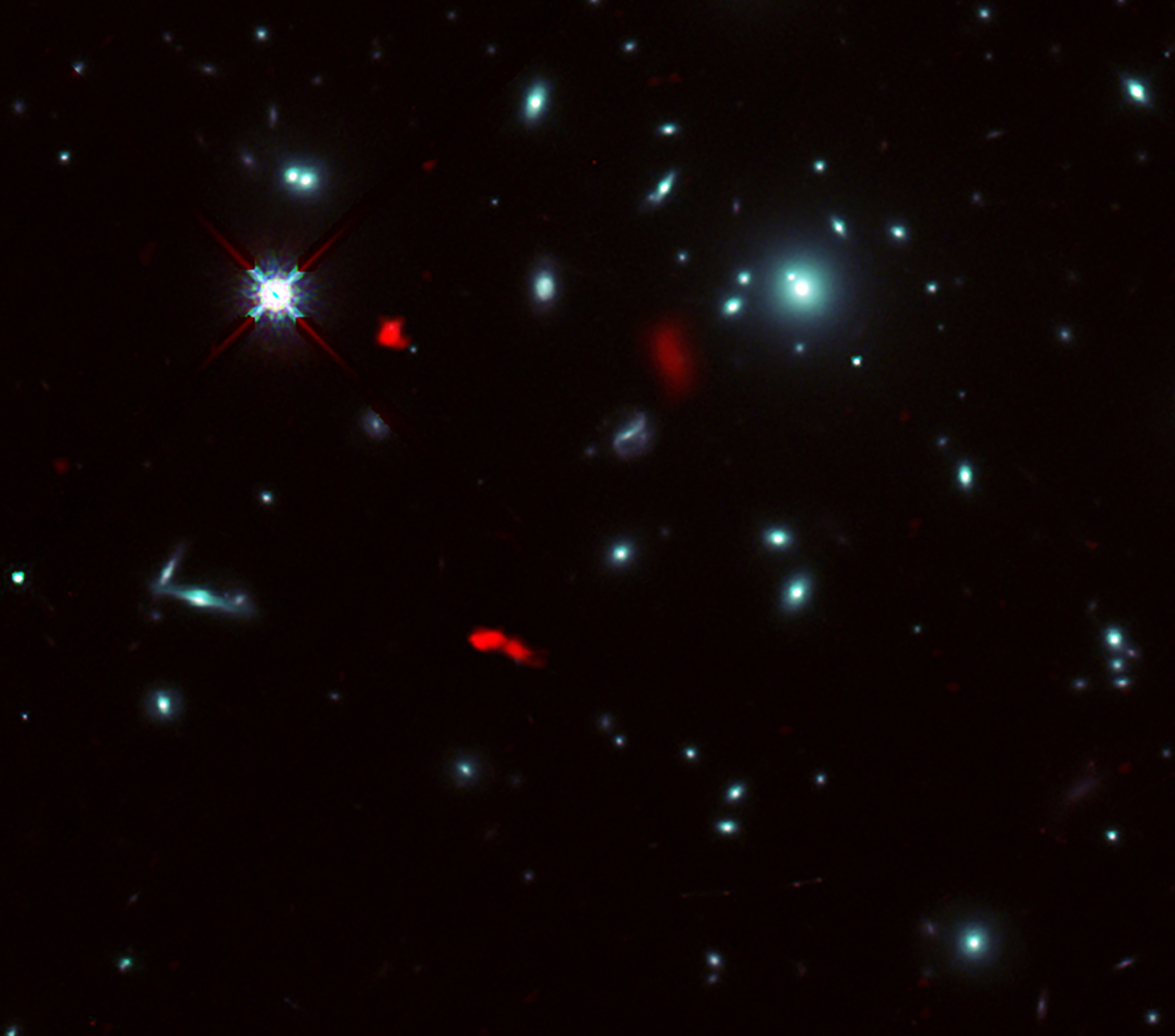DATE2021.04.22 #Press Releases
ALMA Discovers Rotating Infant Galaxy with Help of Natural Cosmic Telescope
Overview of the press release

Figure:
Image of the galaxy cluster RXCJ0600-2007 taken by the NASA/ESA Hubble Space Telescope, combined with gravitational lensing images of the distant galaxy RXCJ0600-z6, 12.4 billion light-years away, observed by ALMA (shown in red). Due to the gravitational lensing effect by the galaxy cluster, the image of RXCJ0600-z6 was intensified and magnified, and appeared to be divided into three or more parts.
Credit: ALMA (ESO/NAOJ/NRAO), Fujimoto et al., NASA/ESA Hubble Space Telescope
These observation results were presented in Seiji Fujimoto et al. “ALMA Lensing Cluster Survey: Bright [CII] 158 μm Lines from a Multiply Imaged Sub-L* Galaxy at z = 6.0719” in the Astrophysical Journal on April 22, 2021 (DOI: https://doi.org/10.3847/1538-4357/abd7ecs) and Nicolas Laporte et al. “ALMA Lensing Cluster Survey: a strongly lensed multiply imaged dusty system at z > 6” in the Monthly Notices of the Royal Astronomical Society on April 22, 2021.
Professor Kotaro Kohno and Assistant Professor Bunyo Hatsukade (Institute of Astronomy, The University of Tokyo), Kana Morokuma (Research fellow, JSPS), Yuki Yoshimura (graduate student), Assistant Professor Masamune Oguri (Department of Physics, Graduate School of Science), Associate Professor Kazuhiro Shimasaku (Department of Astronomy, Graduate School of Science) also contributed to this research.
To read the full press release, please visit the website of the National Astronomical Observatory of Japan.
Publication details
Journal The Astrophysical Journal
Title ALMA Lensing Cluster Survey: Bright [CII] 158μm Lines from a Multiply Imaged Sub-L* Galaxy at z = 6.0719Authors Seiji Fujimoto et al.DOI
Journal The Monthly Notices of the Royal Astronomical SocietyTitle ALMA Lensing Cluster Survey: a strongly lensed multiply imaged dusty system at z > 6Authors Nicolas Laporte et al.DOI *


